India, a land of staggering biodiversity and rich ecosystems, offers some of the most captivating wildlife safaris in the world. From the dense forests of the Western Ghats to the arid landscapes of Rajasthan, India’s national parks and wildlife sanctuaries are sanctuaries for a myriad of species, including the majestic Bengal tiger, the elusive snow leopard, and a spectacular array of birdlife. Conservation efforts in these parks have been pivotal in protecting India’s natural heritage, allowing travelers to witness the country’s wildlife in its natural habitat. This guide explores ten of India’s most renowned national parks, offering insights into ethical wildlife viewing, photography tips, and the best times to visit, ensuring an unforgettable safari experience.
1. Ranthambore National Park, Rajasthan
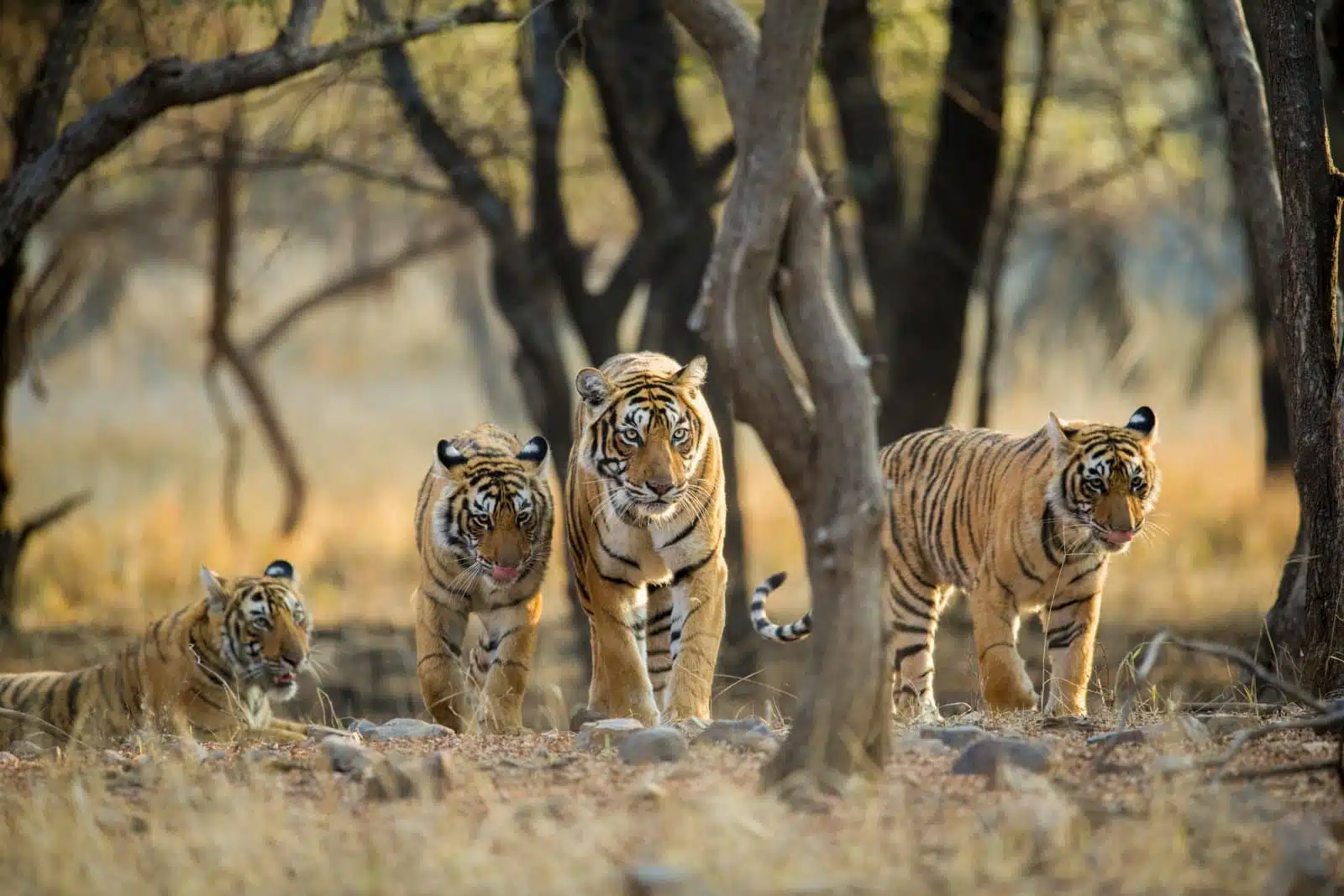
Image Credit: Shutterstock / Archna Singh
Ranthambore National Park, once the hunting grounds of the Maharajas of Jaipur, is now one of the best places in India to see Bengal tigers in the wild. The park’s rugged terrain, dotted with ancient ruins, provides a dramatic backdrop for wildlife viewing. Besides tigers, Ranthambore is home to leopards, sloth bears, hyenas, and a variety of deer and bird species. Jeep safaris offer the chance to explore the park’s diverse zones, each offering unique landscapes and wildlife sightings.
Insider’s Tip: Opt for multiple safaris and explore different zones of the park to increase your chances of tiger sightings. Early morning and late afternoon safaris provide the best light for photography and are when animals are most active.
When to Travel: Visit between October and June, with the peak tiger-spotting season being March to May when the vegetation is sparse, and animals frequent waterholes.
How to Get There: The nearest airport is in Jaipur, about 160 kilometers away. Sawai Madhopur, the gateway town to Ranthambore, is well-connected by train to major cities like Delhi, Jaipur, and Mumbai.
2. Kaziranga National Park, Assam
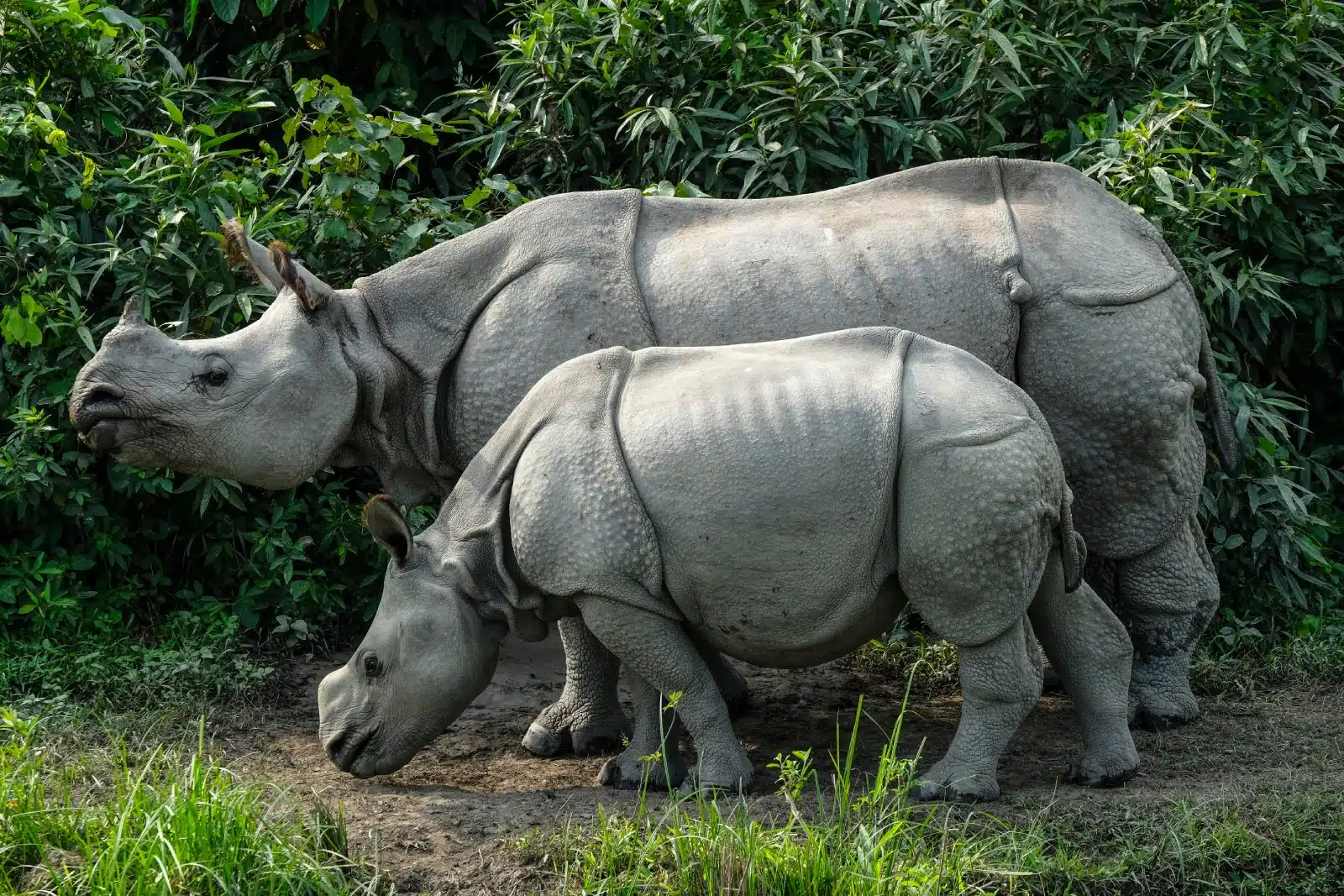
Image Credit: Shutterstock / Oscar Espinosa
Kaziranga National Park, a UNESCO World Heritage Site, is renowned for hosting two-thirds of the world’s great one-horned rhinoceroses. Its floodplains and tall elephant grass make it an ideal habitat for this prehistoric-looking species and for tigers, elephants, and water buffaloes. The park is also a birder’s paradise, with hundreds of bird species, including several migratory ones. Elephant-back safaris and jeep tours offer distinct experiences for exploring the park’s landscapes and its inhabitants.
Insider’s Tip: An jeep-top safari offers an unparalleled perspective for viewing rhinos and other wildlife at close quarters, especially in the early morning mist.
When to Travel: The best time to visit is from November to April when the weather is dry, and the park is fully accessible. The park is closed during the monsoon season from May to October due to flooding.
How to Get There: The nearest airport is in Jorhat, about 97 kilometers from the park. Kaziranga is also accessible by road from Guwahati, approximately 220 kilometers away.
3. Bharatpur Bird Sanctuary, Rajasthan
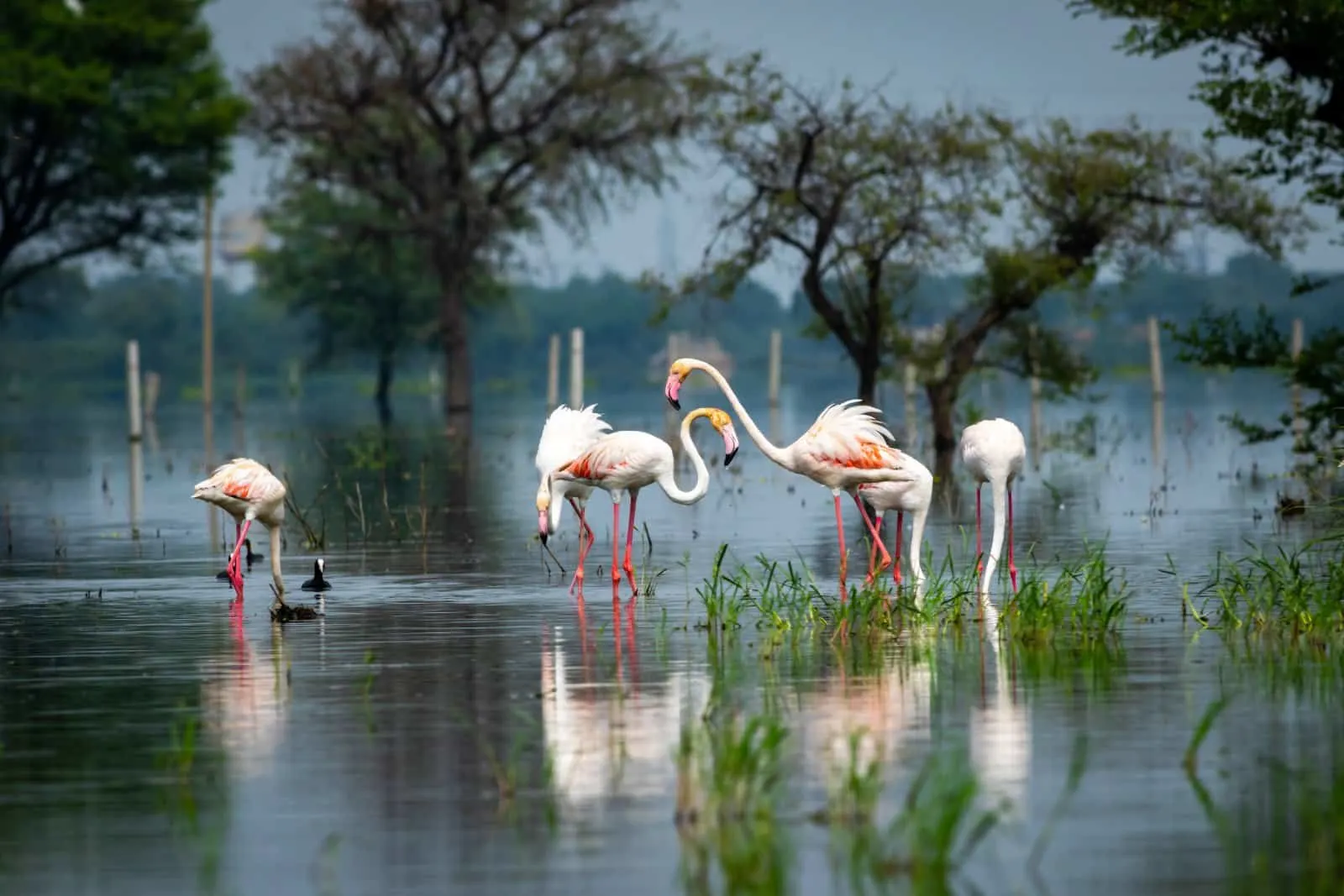
Image Credit: Shutterstock / Sourabh Bharti
Also known as Keoladeo Ghana National Park, Bharatpur Bird Sanctuary is a haven for bird watchers, hosting thousands of birds, especially during the winter when migratory species arrive. Over 230 species of birds have been spotted here, including the rare Siberian crane. The park’s wetlands, woodlands, and grasslands provide diverse bird habitats and wildlife habitats. Walking, cycling, and rickshaw tours led by knowledgeable guides offer intimate encounters with the park’s avian inhabitants.
Insider’s Tip: Hire a local guide with expertise in birdwatching to enhance your experience. The guides are skilled at spotting and identifying birds and knowing their calls.
When to Travel: The best time to visit is from October to March when migratory birds are present. Early mornings are ideal for birdwatching.
How to Get There: The nearest airport is about 56 kilometers away in Agra. Bharatpur is also well-connected by train to major cities like Delhi, Jaipur, and Mumbai.
4. Sundarbans National Park, West Bengal
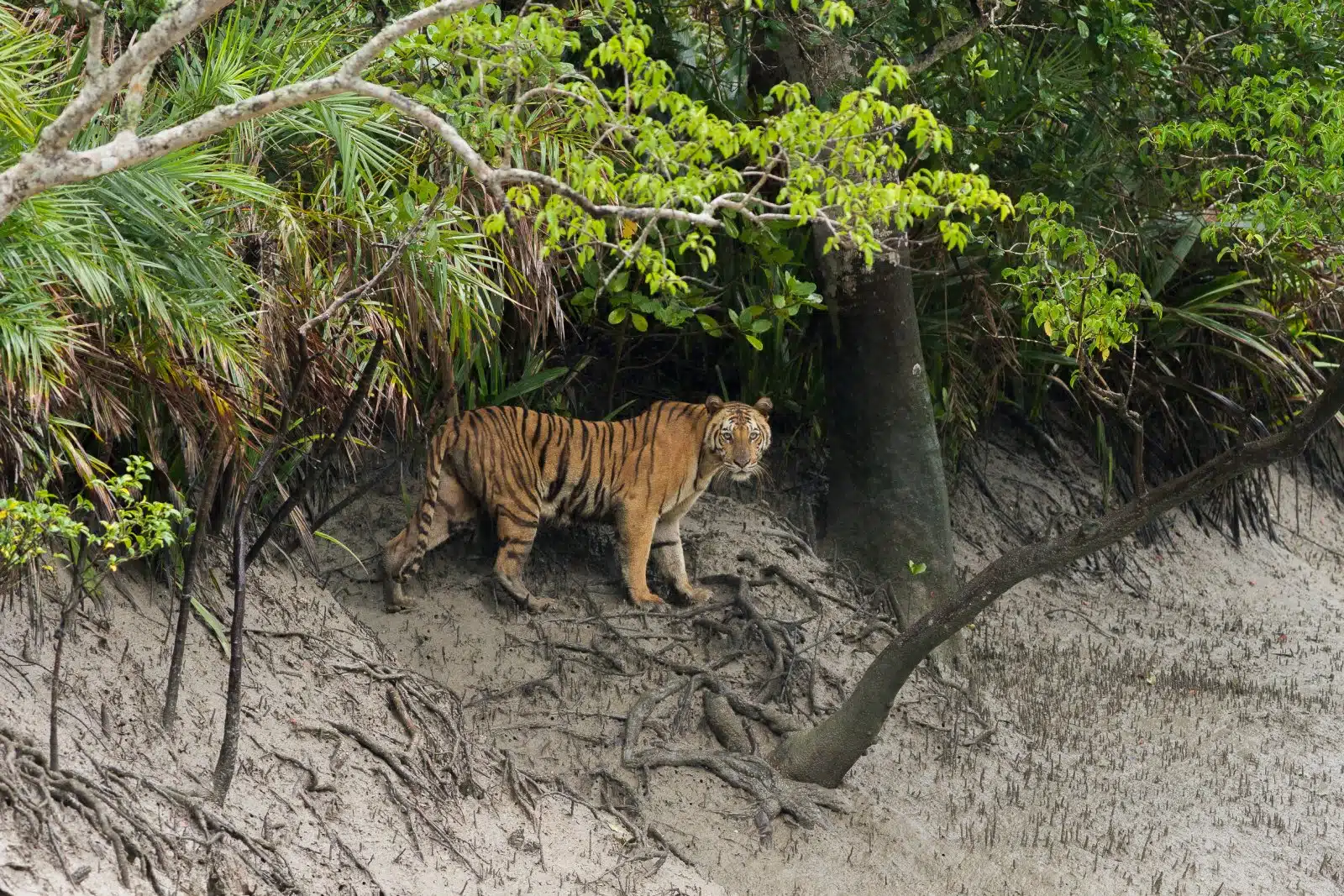
Image Credit: Shutterstock / Soumyajit Nandy
Sundarbans National Park, a UNESCO World Heritage Site, is the world’s largest tidal halophytic mangrove forest, sprawling across India and Bangladesh. This unique ecosystem is home to the Royal Bengal Tiger, which has adapted to an aquatic lifestyle, with sightings more elusive due to the dense mangrove cover. The park also shelters various bird species, saltwater crocodiles, and the endangered Ganges river dolphin. Boat safaris through the network of tidal waterways offer the chance to explore this biodiverse habitat, providing a different perspective on wildlife viewing.
Insider’s Tip: Opt for a multi-day boat tour to increase your chances of spotting wildlife, including the elusive tiger. The early morning or late afternoon is the best time for sightings.
When to Travel: The best time to visit is from December to February when the weather is cooler and more comfortable for exploration.
How to Get There: The nearest airport is in Kolkata, from where Sundarbans is accessible by road and then by boat from Godkhali Port, the gateway to the national park.
5. Jim Corbett National Park, Uttarakhand
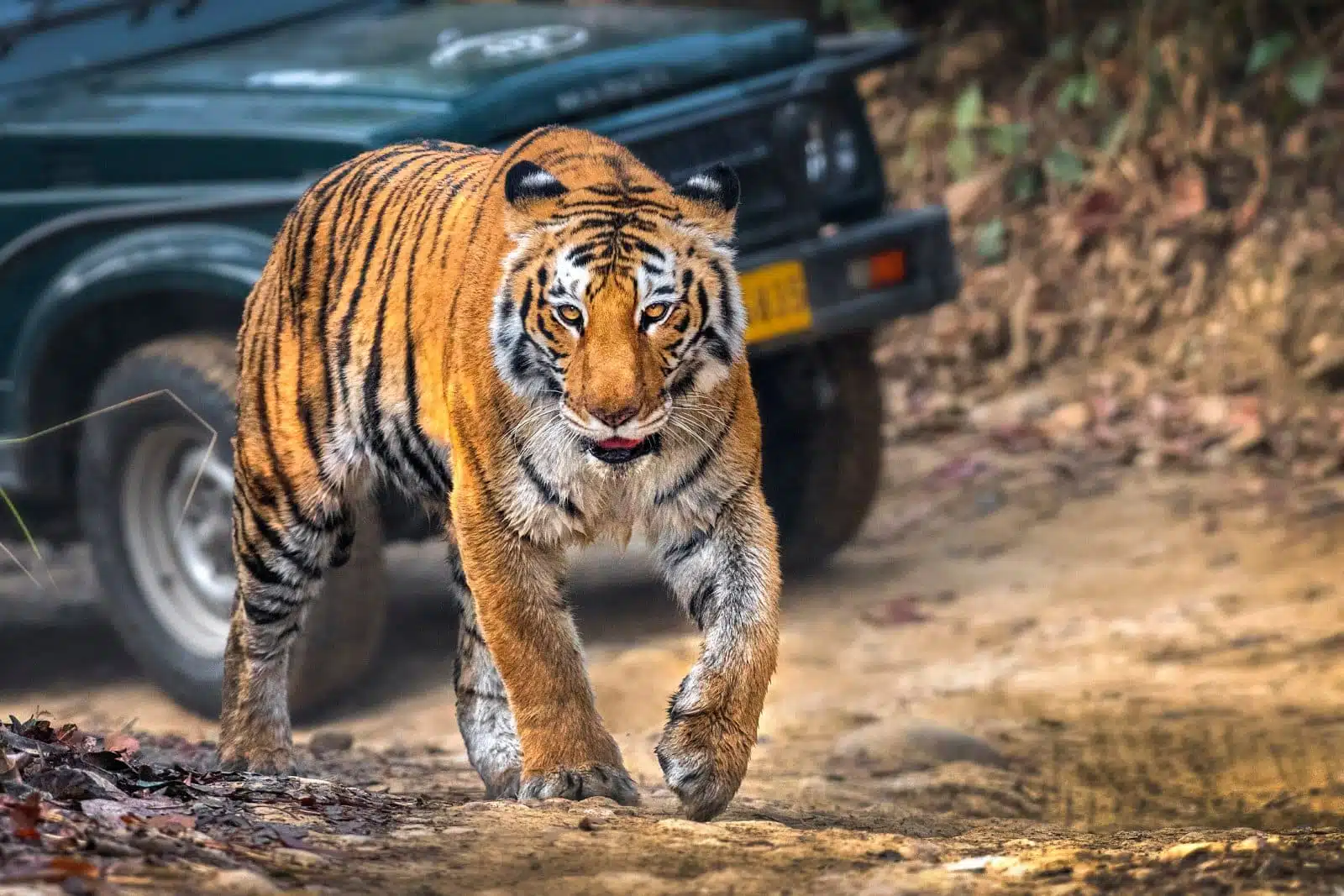
Image Credit: Shutterstock / Rajat Bhandari
Established in 1936 as India’s first national park, Jim Corbett National Park is named after the legendary British hunter-turned-conservationist. Nestled in the foothills of the Himalayas, it’s known for its significant population of Bengal tigers, along with elephants, leopards, and hundreds of bird species. The park’s diverse landscapes offer rich wildlife viewing opportunities, including dense forests, grasslands, and river habitats. Jeep safaris and elephant rides allow visitors to explore the park’s beauty and inhabitants.
Insider’s Tip: Stay in one of the eco-friendly lodges or campsites within the park’s buffer zone for an immersive experience. Booking safaris well in advance is recommended, especially during peak season.
When to Travel: The park is open from mid-November to June, with the winter months (November to February) being ideal for bird watching and the summer months (March to June) best for tiger sightings.
How to Get There: The nearest airport is in Dehradun, approximately 156 kilometers away. Ramnagar is the gateway to the park, with good rail and road connectivity to major cities like Delhi.
6. Gir National Park, Gujarat
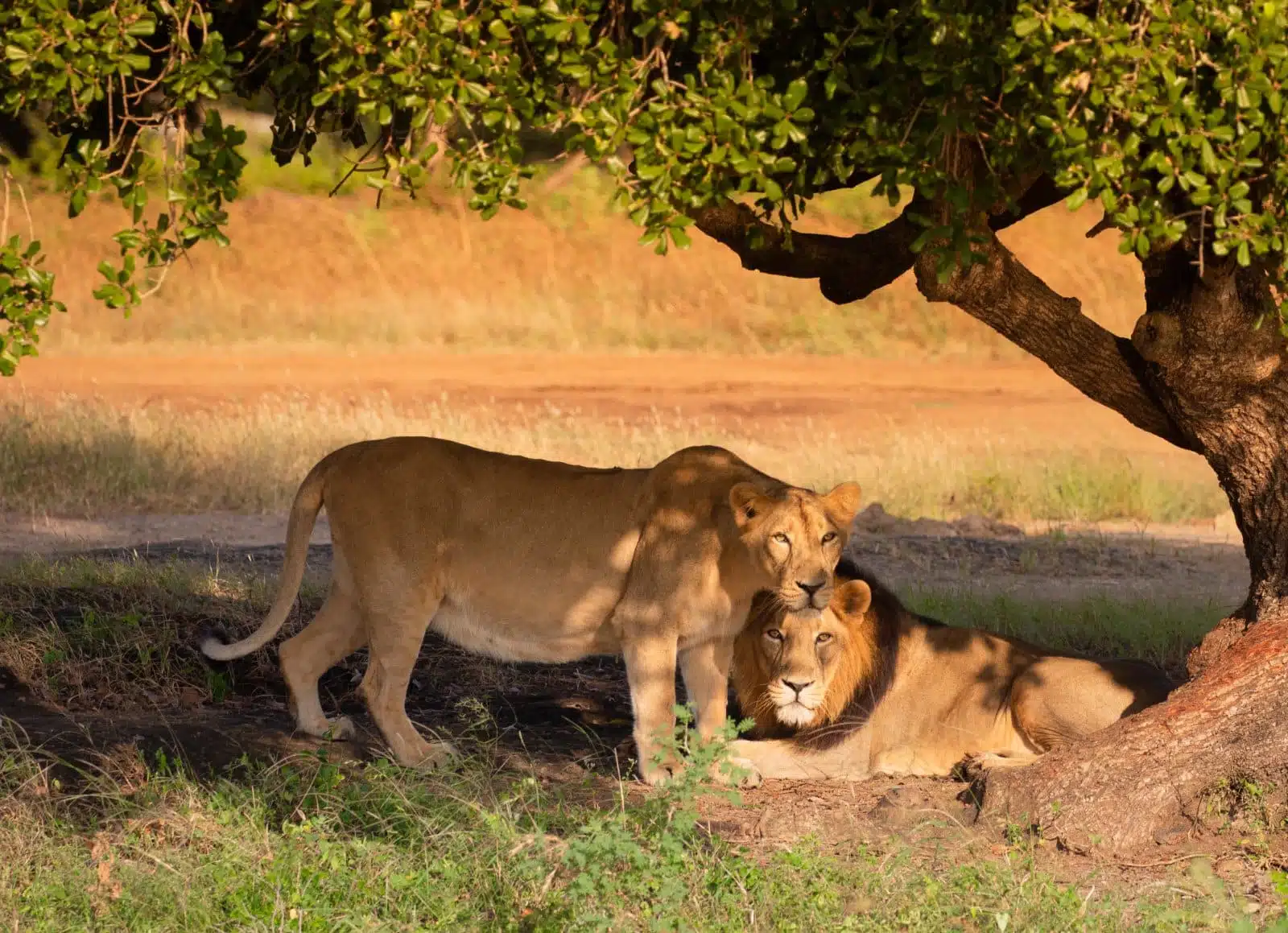
Image Credit: Shutterstock / Kaushik Ghelani
Gir National Park is the last bastion of the Asiatic lion, offering a rare opportunity to witness these majestic creatures in their natural habitat. Beyond lions, Gir is home to leopards, antelopes, vultures, and several other wildlife species. The semi-arid deciduous forest and savannah-like grasslands provide a unique ecosystem for safari-goers. Jeep safaris are the primary means of exploring the park, with guides providing insights into the conservation success story of the Asiatic lion.
Insider’s Tip: Book your safari early in the morning when animals are most active. Additionally, visiting the Devalia Safari Park, a section of Gir designed to offer guaranteed lion sightings, can complement your wildlife experience.
When to Travel: The best time to visit is from December to March when the weather is cooler. The park is closed from mid-June to mid-October during the monsoon season.
How to Get There: The nearest airport is in Rajkot, about 160 kilometers away. Sasan Gir, the entry point to the park, is well connected by road and rail.
7. Periyar Wildlife Sanctuary, Kerala
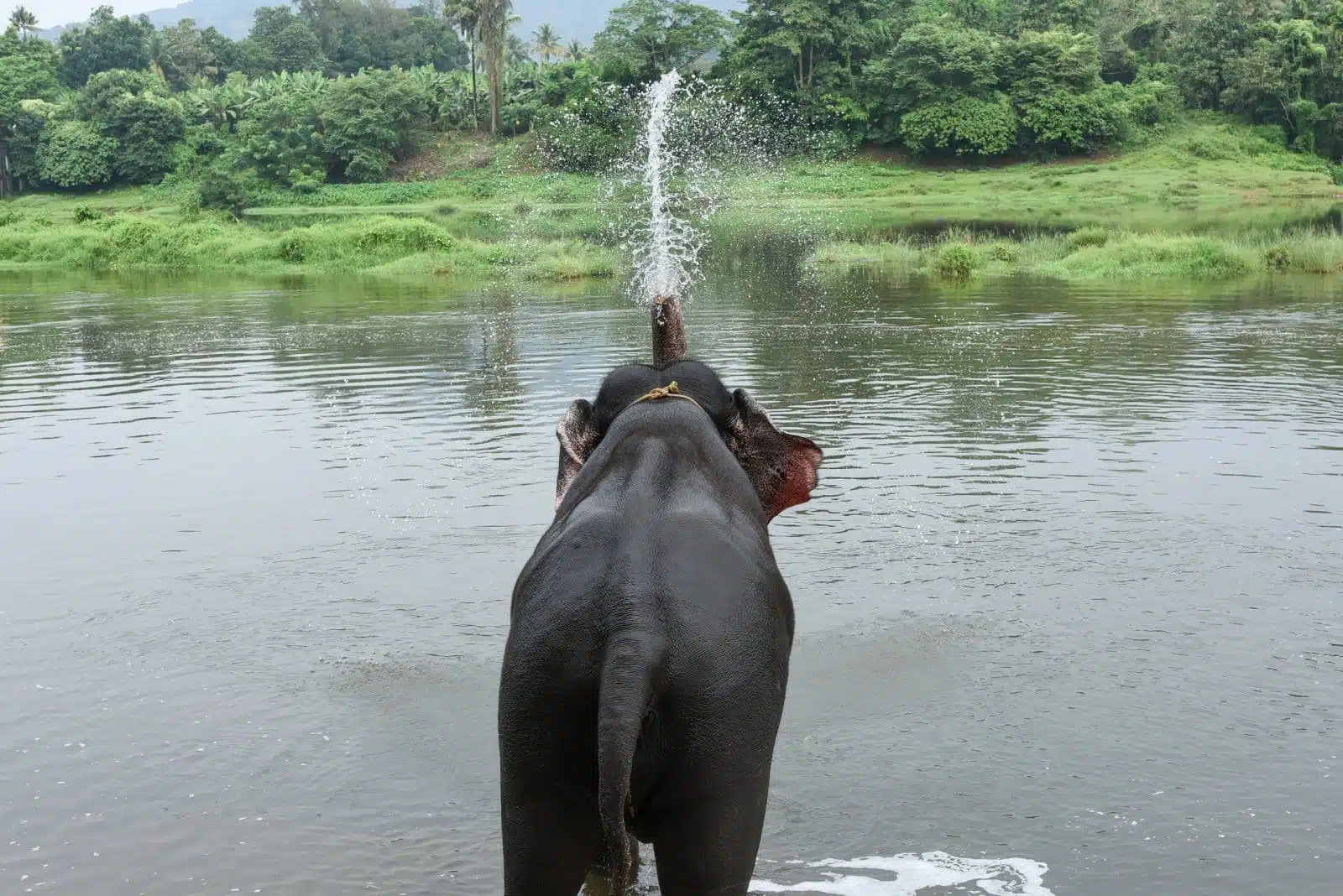
Image Credit: Shutterstock / Santhosh Varghese
Nestled in the Western Ghats, Periyar Wildlife Sanctuary is renowned for its elephant population and picturesque lake, an artificial reservoir around which the park is developed. The sanctuary’s dense evergreen forests are also home to tigers, gaur, sambar, and a variety of birds and reptiles. Boat safaris on Periyar Lake offer a unique vantage point for wildlife viewing, especially for spotting herds of elephants along the water’s edge.
Insider’s Tip: Consider participating in the eco-tourism activities offered by the park, such as bamboo rafting and nature walks, for a more comprehensive understanding of Periyar’s ecosystem.
When to Travel: Visit from October to February for the best weather conditions. The park remains open year-round, offering different experiences each season.
How to Get There: The nearest airport is about 140 kilometers away in Kochi. Kottayam is the closest major railway station, from where Periyar is accessible by road.
8. Kanha National Park, Madhya Pradesh
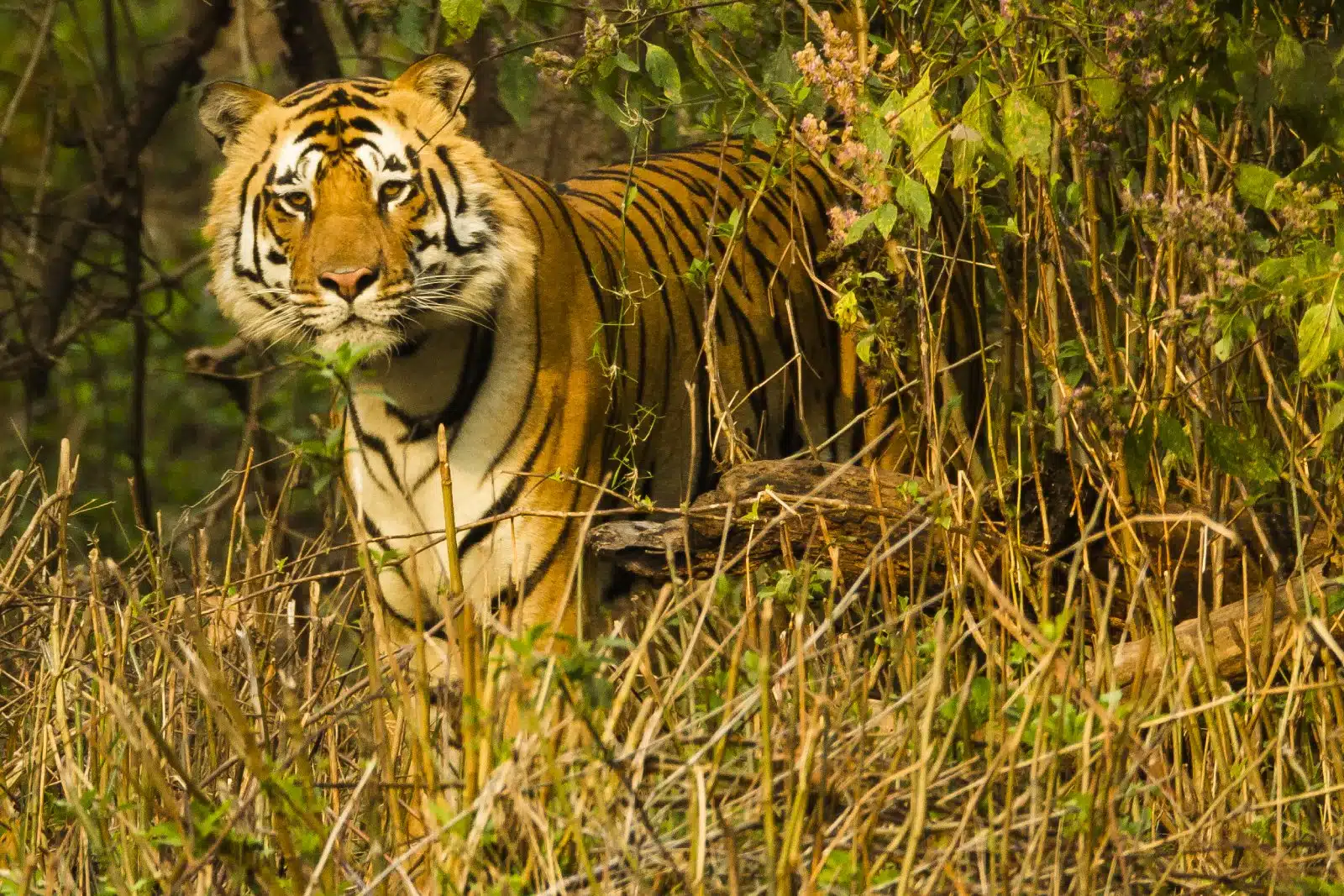
Image Credit: Shutterstock / Joe McDonald
Kanha National Park, the inspiration behind Rudyard Kipling’s “The Jungle Book,” offers one of India’s best wildlife safari experiences. Its sal and bamboo forests, grassy meadows, and ravines harbor a significant population of Bengal tigers, leopards, sloth bears, and barasingha, also known as the swamp deer. The park’s conservation efforts have made it a model for wildlife protection. Jeep safaris provide the chance to explore this vast landscape and its diverse fauna.
Insider’s Tip: Opt for a full-day safari permit if available, as it allows for deeper exploration of the park’s different zones and a higher chance of sightings.
When to Travel: The park is open from mid-October to June, with the peak season for wildlife viewing being March to May.
How to Get There: The nearest airports are in Jabalpur (160 kilometers away) and Raipur (250 kilometers away). Both cities are well connected by road to Kanha.
9. Bandhavgarh National Park, Madhya Pradesh
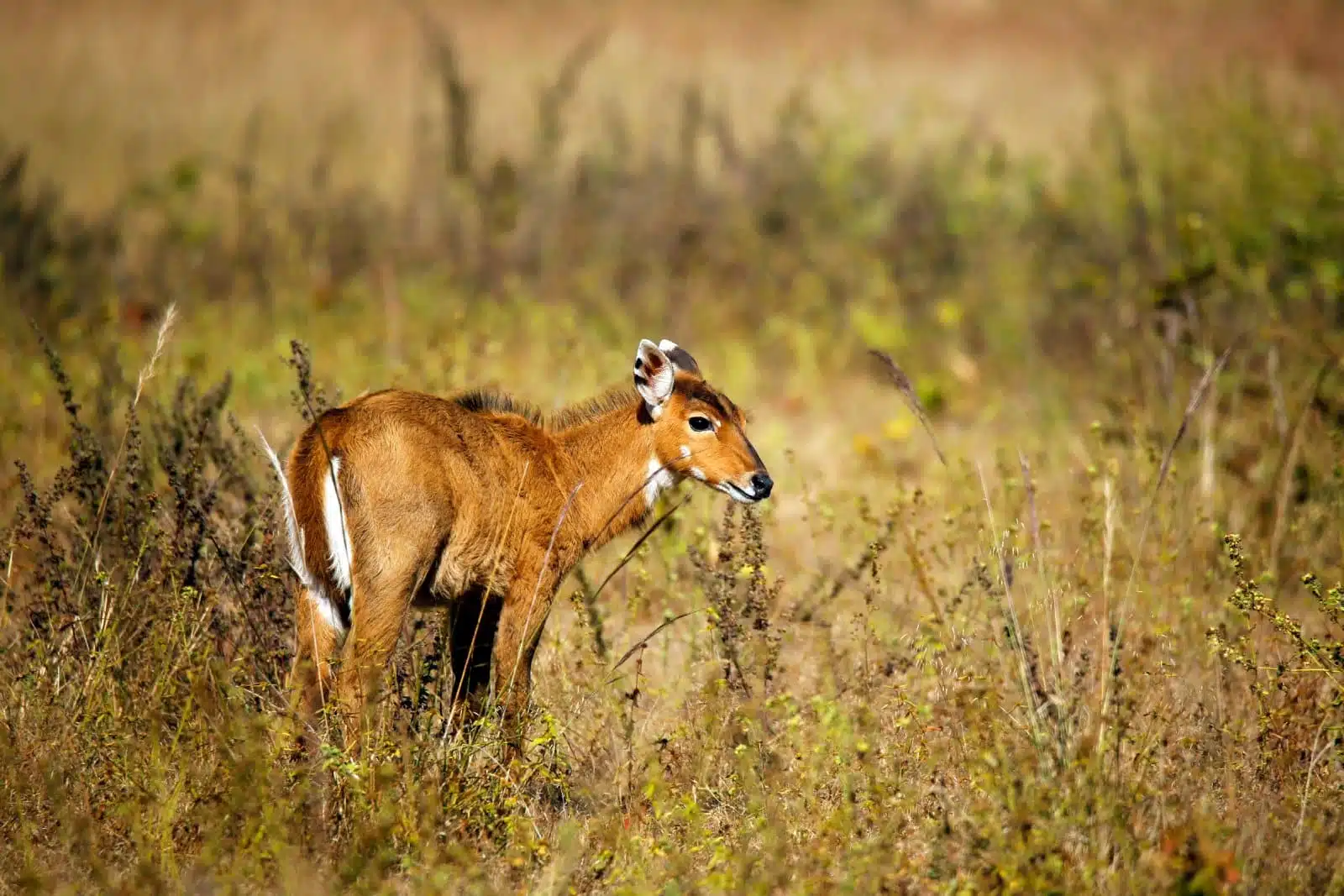
Image Credit: Shutterstock / Daniel Lamborn
Bandhavgarh National Park, set amidst the Vindhya Hills of Madhya Pradesh, boasts one of the highest densities of Bengal tigers in the world, making it an exceptional destination for wildlife enthusiasts keen on sighting these majestic predators. The park’s landscape is a mix of rocky hills, sal forests, and meandering streams, creating a rich habitat for a variety of other species, including leopards, gaur, and more than 250 bird species. Bandhavgarh’s historical significance is highlighted by the ancient fort that sits at the park’s center, offering panoramic views of the surrounding forest. Jeep safaris are the most popular way to explore the park, with experienced guides enhancing the experience by sharing insights into the behavior of tigers and the park’s diverse ecosystems.
Insider’s Tip: For photographers and serious wildlife enthusiasts, hiring a private jeep rather than joining a group safari offers the flexibility to wait for the perfect shot and spend more time at sightings.
When to Travel: The park is open from October to June, with the hot months of April and May being the best for tiger sightings as animals come out in search of water.
How to Get There: The nearest airport is Jabalpur, which is approximately 190 kilometers away. From Jabalpur, Bandhavgarh can be reached by road in about 4 hours.
10. Valley of Flowers National Park, Uttarakhand
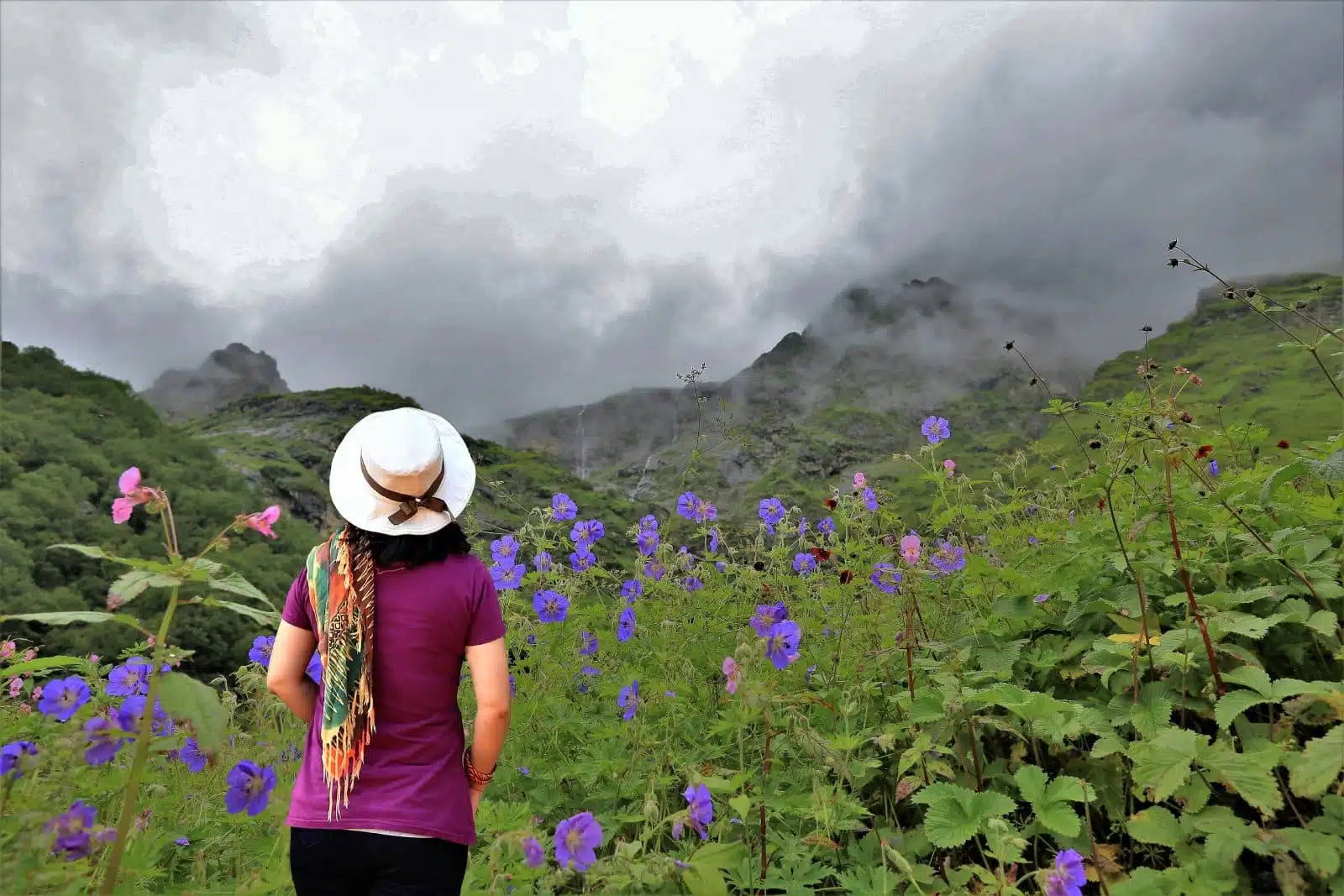
Image Credit: Shutterstock / lakkana savaksuriyawong
Nestled in the high altitudes of the Himalayas in Uttarakhand, the Valley of Flowers National Park is a UNESCO World Heritage Site renowned for its meadows of endemic alpine flowers and outstanding natural beauty. This park, accessible only by foot, is a haven for botanists, nature lovers, and trekkers, offering a landscape that blooms with a vibrant tapestry of flora from June to October. The valley also provides habitat for rare and endangered animals, including the Asiatic black bear, snow leopard, and blue sheep. The trek to the valley, starting from Govindghat, is as spectacular as the destination, with breathtaking views of the surrounding mountains and waterfalls.
Insider’s Tip: While the focus may be on the flowers, don’t overlook the opportunity to spot wildlife. Early mornings or late afternoons are the best times for animal sightings, as they come out to feed.
When to Travel: The best time to visit is from July to September when the flowers are in full bloom. The park is closed from October to May due to snowfall.
How to Get There: The nearest major town is Joshimath in Uttarakhand, accessible by road from Haridwar or Dehradun. Govindghat is a short drive away from Joshimath, where the trek to the Valley of Flowers begins.
The Bottom Line
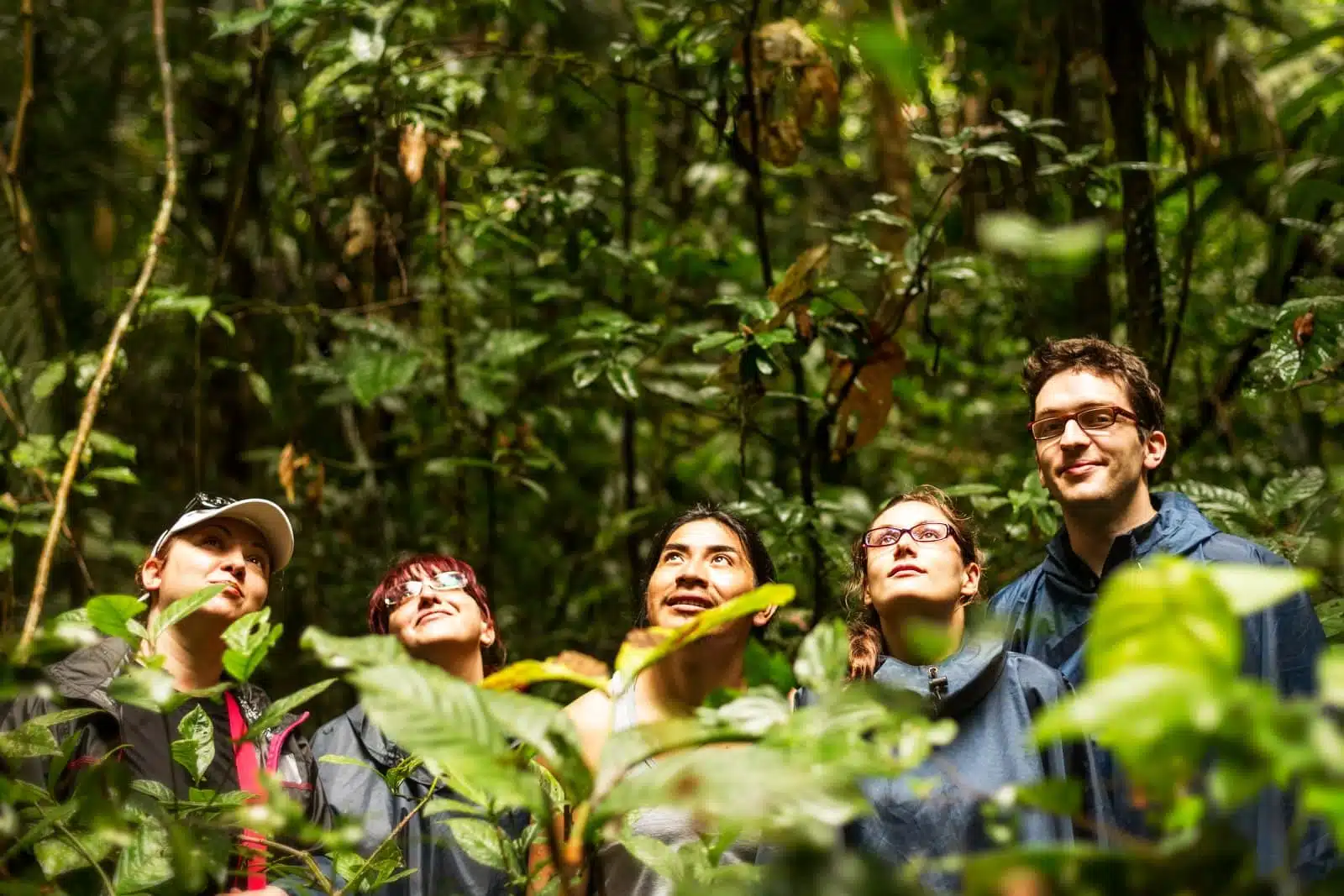
Image Credit: Shutterstock / Ammit Jack
Exploring India’s national parks offers an unparalleled opportunity to immerse yourself in the country’s rich biodiversity and witness the splendor of its wildlife. From the dense forests of Bandhavgarh, teeming with tigers, to the ethereal beauty of the Valley of Flowers, carpeted with alpine blooms, each destination provides a unique window into the natural world. As you venture into these wild spaces, remember the importance of respecting the environment and supporting conservation efforts to ensure these treasures remain for future generations. Whether you’re tracking big cats or trekking through Himalayan meadows, India’s national parks promise adventures that are thrilling and deeply moving, connecting you to the earth in profound ways.
More From The Green Voyage
Top 10 Trending Travel Destinations 2024
6 Essential Banking Apps for International Travel – Managing Your Finances on the Go
Traveling With Kids – 10 Tips to Create Memorable Family Holidays
The post 10 Wildlife Safaris in India – Exploring the Country’s National Parks 2024 first appeared on The Green Voyage.
Featured Image Credit: Shutterstock / Stella_E.
For transparency, this content was partly developed with AI assistance and carefully curated by an experienced editor to be informative and ensure accuracy.
Tips for Trip Success
Book Your Flight
Find an inexpensive flight by using Kayak, a favorite of ours because it regularly returns less expensive flight options from a variety of airlines.
Book Your Hotel or Special Accommodation
We are big fans of Booking.com. We like their review system and photos. If we want to see more reviews and additional booking options, we go to Expedia.
You Need Travel Insurance!
Good travel insurance means having total peace of mind. Travel insurance protects you when your medical insurance often will not and better than what you get from your credit card. It will provide comprehensive coverage should you need medical treatment or return to the United States, compensation for trip interruption, baggage loss, and other situations.Find the Perfect Insurance Plan for Your Trip
